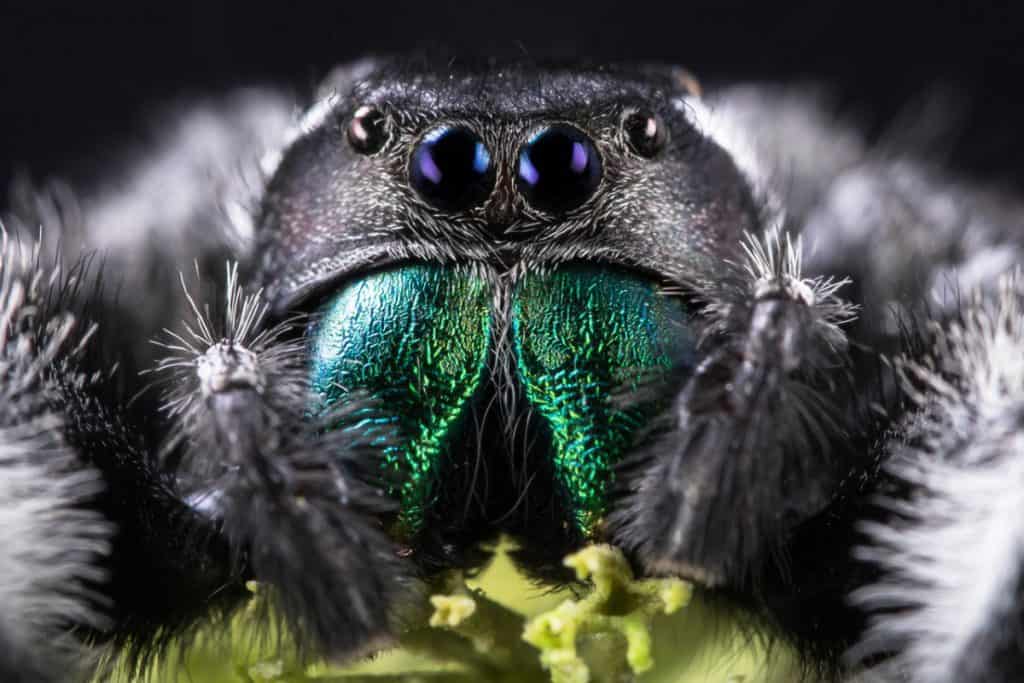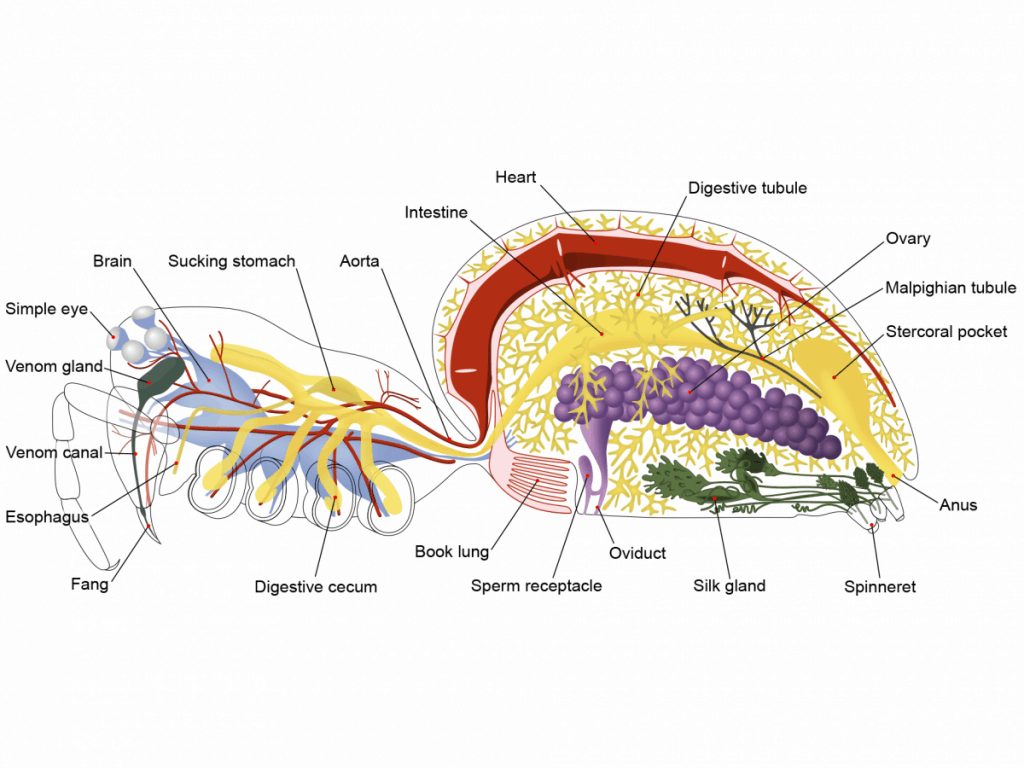
Ever wondered if spider fangs grow back? Kind like a shark who’s always growing a new set of teeth.
In this article we answer that very question and more!
If you want to know the quick answer though: Can Spider Fangs Grow Back? Yes, surprisingly they can! However spiders can only regrow their fangs under a specific set of circumstances when they are molting or shedding.
That being said, there’s waaaay more too it than a simple answer paragraph. So dig in and read this interesting article on how spider fangs grow back…
Do spider fangs grow back upon molting?
Spiders are fascinating creatures. Though they evoke feelings of horror, dread, and sometimes disgust in the majority of people, people who manage to overcome their fear of spiders will tell you how interesting the arachnids are. Their anatomy and physiology are riveting.
One of the common questions often asked about a spider’s anatomy is: Can spider fangs grow back? To be able to answer this question, we will first have to understand a spider’s physiology.
Understanding a Spider’s Physiology

Spiders are arachnids and differ from insects in that they have two body parts. The front part of a spider’s body is called the Cephalothorax and holds a spider’s eyes, brain, and stomach.
Most of the spider species have eight eyes. However, it is not uncommon to find spiders with a lesser number of eyes. The Cephalothorax is also the part that lodges a spider’s legs, also called the pedipalps.
For more info about the difference between insects and arachnids, take a look at our article Are Spiders Insects or Bugs?
The pedipalps are responsible for holding the prey while the spider bites it. A spider’s legs are covered with hairs that pick up smells and vibrations and help a spider find its prey.
The front part of a spider’s body also lodges the glands that are responsible for producing the venom that spiders use to kill or immobilize its prey and the fangs that perform the vital function of injecting the prey’s body with the poison produced by the glands.
The rear part of a spider’s body is called the Abdomen, and this is the part that holds the spinnerets. Spinnerets are silk-producing glands. These glands are responsible for the plush spider silk, which in human society is often associated with wealth and grandeur.
The abdomen also has another gland that is responsible for producing oil, which protects the spider from its web.
This understanding of a spider’s physiology and anatomy is essential to develop an understanding of why does a spider need its fangs and how is it able to grow them back.
Do Spiders have teeth as well as fangs?
The front section of a spider has developed from an ancestral limb-like structure often associated with arthropods. Though, as in arthropods, the legs of a spider have several joints, the chelicerae area has evolved to include only two parts: the basal block and fangs.
Thus, instead of teeth, spiders have fangs, which they use to inject the prey with a venom that also contains enzymes that liquidize a spider’s food and pre-digest it. The spider then sucks its food through the mouth.
You may be wondering what spiders eat that ends up being liquidized? Lucky for you we’ve got a guide: What Do Spiders Eat? The Complete Guide.
What do the Spiders use their fang for?
A spider’s fang is like a natural injection it uses to pierce the skin of its prey and deliver the venom needed to immobilize the prey. A recent research study has revealed that a spider’s fangs are curved and, thus, can do an excellent job of holding the victim in place while injecting the venom.
The curved nature of a spider’s fangs also allows the spider to attack prey from several different directions.
Further, since the fangs are conical and hollow, they have perfect stiffness per unit volume. In simple terms, a spider’s fang can apply significant force to inject the venom into a prey without breaking or getting deformed.
The fact that fangs are made from protein and chitin further establishes these natural injections as the most vital organ in a spider’s body. It is due to all of these reasons that spiders without fangs find it really difficult to eat, and thus, losing a fang can be fatal to a spider in the long run.
It is, therefore, that those who have a tarantula or a spider as a pet often ask this question: can spider fangs grow back?
Can spider fangs grow back? Let’s find out.
Spiders lack an internal skeleton. Instead, they have an exoskeleton that exists on the outside of the body. The exoskeleton of a spider is made of cuticle and chitin.
While the cuticle facilitates movement, it cannot expand like the muscles and bones in the internal skeleton of a human being. Thus, to grow in size, a spider must shed its old exoskeleton and replace it with a bigger new one.
This process by which a spider absorbs a part of its old cuticle layer and secrets a new one is called Molting. The interesting fact here is that a spider can molt multiples times during its life.
Can spider fangs grow back? Yes, spiders can grow back their fangs if they lose them before the final molt. In the majority of spider species, the final molt happens right before the spider enters adulthood.
In case a spider lost its fang before the last molt, a new fang will appear in the stump of the lost fang when the spider molts next. Much like fangs, spiders can also grow back legs and spinnerets.
Conclusion
It is exciting facts like these that make spiders interesting to arachnologists. Next time you see a spider, try to overcome your fear and understand what nature’s marvel the arachnids are.
If you enjoyed reading this article, why not check out our articles on:
The Three Best Kinds of Spiders to Keep as Pets
How Small Can Spiders Get? Real Small!
P.S.
That’s it for this article. I hope you enjoyed reading it and if you think it might be useful for someone else then please share it on social media, email or your own website! It really encourages us to write more content and grow the site!
All the best
Steve
Recent Posts
Tiny Black Bugs in Bathroom NO WINGS: What They Are and What to Do!
Finding tiny black bugs in your bathroom can be uncomfortable, to say the least. Especially if they are persistent, or they appear in very large numbers, which they often like to do. When it...
Tiny Black Bugs in Plant Soil - What Are They & What To Do About It
A short horror story: You get a new houseplant. You do your best to take care of it. You’ve ensured that it has the right soil, the right amount of sun, it gets enough water. And then one day, you...

